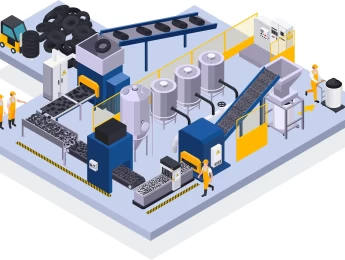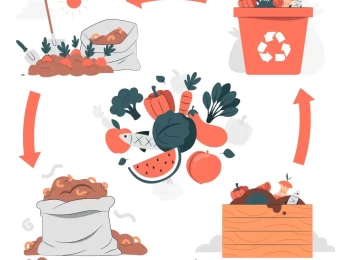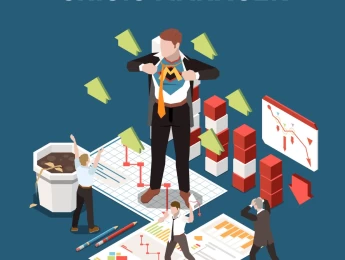Maintaining health and safety within any industry should be a priority for an employer, but particularly for those within construction. Construction projects come with immense physical risks and a variety of hazards that could pose harm to business operations, and to the individuals working.
Accurately identifying hazards is crucial to effectively managing risks and hazards. Utilising methods like HAZOP is ideal, as these will allow for full comprehension and understanding from every relevant individual. Furthermore, using hazard identification methods will make establishing risk management much easier. Hazards can scale from minor to major incidents, so it is absolutely essential that all potential risks are identified to ensure the correct preventatives are being implemented.
Detecting hazards is not the only task. Implementing effective measures to prevent them from occurring should be a high priority. Risk management aims to ensure all hazards and risks are completely minimised. There are direct methods for certain aspects and more broad options for overall risks.
Upon completion of this course, participants will be able to:
- Understand the importance of hazard detection within construction.
- Identify what factors of construction processes are deemed as hazardous.
- Assess the essential controls and safeguard steps to minimise risks for each hazardous activity.
- Conduct risk audits and assessments to identify hazards.
- Establish effective risk management.
- Prioritise risk management depending on the most impactful to least impactful risks and create solutions and preventatives for them.
- Utilise various methods of risk and hazard identification.
- Create an awareness of the workplace culture surrounding and preventing risk.
- Comprehend the consequences of poor risk management.
This course is designed for anyone responsible for maintaining health and safety within a construction organisation. It would be most beneficial for:
- Construction Managers
- Site Managers
- HSE Officers
- Engineering Personnel
- Contractors and Subcontractors
- Operations Managers
- Project Managers
- Construction Directors
- Site and Construction Inspectors
- Risk Analysts
This course uses a variety of adult learning styles to aid full understanding and comprehension. Participants will review risk assessments and hazard identification documents for established construction projects to highlight prioritised hazards and their control methods.
Participants can partake in various learning exercises and training methodologies, including presentations, video materials, practical demonstrations and group activities. The combination of these activities will grant the participants ample opportunities to develop the knowledge and practical skills acquired within this course and be able to demonstrate them to one another through their group activity.
Day 5 of each course is reserved for a Q&A session, which may occur off-site. For 10-day courses, this also applies to day 10
Section 1: Introduction to Health and Safety
- Defining health and safety.
- Understanding the role health and safety plays within the construction industry.
- Identifying the driving factors for maintaining health and safety.
- The concept and principles of risk assessments.
- The importance of conducting regular and thorough risk assessments.
- Comprehending accident causation.
- Techniques and methods to effective risk management.
Section 2: Hazard Identification
- The various types of hazards and risks within a construction environment –
- Hot work
- Rigging and lifting
- Power tools and heavy machinery
- Working at heights
- Prioritising risks and creating preventative measures to minimise them.
- Understanding methods of hazard identification – HAZOP, LOPA and FMEA.
- External and internal influences on hazards.
- The human influence on major and minor incidents.
Section 3: Hazard Control Methods
- The vitality of utilising and maintaining various hazard control methods.
- Ensuring all employees and construction site visitors wear and the correct PPE.
- The concepts, principles and procedures relating to various control methods –
- Confined space entry
- Mobile equipment
- Pressure testing
- Energy isolation
- Communicating effectively with all relevant personnel the health and safety regulations.
Section 4: Control of Work
- Conducting a job safety analysis (JSA).
- How a JSA is beneficial within the construction industry.
- Utilising risk assessment results to delegate permits to work.
- Meeting the legal requirements of permits to work.
- Carrying out the necessary inspections following strict guidelines to ensure all health and safety procedures are followed.
- Establishing an emergency response that all employees are aware of.
Section 5: Encouraging Workplace Safety
- Openly discuss hazards and risks and strictly encourage all employees to follow safety guidelines.
- Observing and implementing interventions when necessary.
- Campaigns and initiatives to raise hazard awareness.
- Toolbox talks and management walkabouts.
Upon successful completion of this training course, delegates will be awarded a Holistique Training Certificate of Completion. For those who attend and complete the online training course, a Holistique Training e-Certificate will be provided.
Holistique Training Certificates are accredited by the British Assessment Council (BAC) and The CPD Certification Service (CPD), and are certified under ISO 9001, ISO 21001, and ISO 29993 standards.
CPD credits for this course are granted by our Certificates and will be reflected on the Holistique Training Certificate of Completion. In accordance with the standards of The CPD Certification Service, one CPD credit is awarded per hour of course attendance. A maximum of 50 CPD credits can be claimed for any single course we currently offer.
- Course Code IND13-104
- Course Format Online, Classroom,
- Duration 5 days













